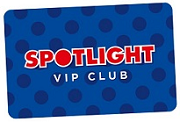 | ||
| Your browser is not supported. | ||
|
Please browse our site using any of the following options:
| ||
Choosing Kids’ Craft Essentials
Whether it's after school or during the school holidays, kids will always love getting their hands on a new craft project or artwork! Art and craft activities are the perfect way for your child to have heaps of fun, while also learning new skills and discovering exciting ways to express themselves.
At Spotlight we've got everything you need to sate your child's thirst for creative fun, from painting and drawing to all sorts of hands-on crafts. This guide will walk you through all the kinds of kids' craft kits and supplies you find with us, as well as how to set up a craft station so your child always has a place to get creative at home.
Quick Links
- Kids' Painting Supplies
- Kids' Drawing & Colouring Supplies
- Kids' Beading Supplies
- Kids' Mosaic Supplies
- Kids' Sculpting & Clay Supplies
- Building A Kids' Art & Craft Station
Kids' Painting Supplies
From finger painting through to compositions on canvas, painting is one of the most enjoyable and enduring forms of artistic expression for kids. Setting them up with age-appropriate materials is key to unleashing their artistic potential.
Painting is one of the best kids' holiday activities, as it keeps them occupied for longer than drawing and there is always plenty of artistic inspiration around for them to draw from - Christmas, Easter and even big sporting events can all result in some wonderful works of art!
Preschool and early primary school age kids' paints
- Use washable paints so messes don't matter. Washable paints will come easily out of clothing and can be wiped off walls and floors with minimal effort.
- Buy primary colours to help kids learn about mixing them to make other colours. Bright colours are very important for kids to develop their eyesight and discover how colours work together. Go for bold hues and avoid pastels!
- Play with different forms of paint application, such as brushes, rollers, foam stamps, or good old-fashioned potato printing and fingerpainting. Using different tools will help improve your child's motor skills and hand-eye coordination.
Primary school age kids' paints
- Give kids the opportunity to experiment with different types of paint, including acrylic, and watercolour. These water-based paints provide more colour and potential for interesting techniques but are still easy to wash out of clothes and blend when needed.
- Kids who want to paint on unusual surfaces like glass or ceramic should look into our range of craft paints.
- Provide them with a variety of brushes, and play with the different effects they produce. This is a great age for kids to learn which brushes produce thick lines (flat and mop brushes) and which produce thin lines (round and liner brushes).
- Try projects like painting by numbers and painting plaster figures. This allows them to create neat-looking artworks that are great to display in their room.
- Get them to experiment with mixed media projects so they can see how paint interacts with other mediums. Combining paint with pens, crayons and accessories like glitter and sequins can produce some really cool effects!
Secondary school age kids' paints
- Introduce media such as oil paints and even spray paint. These advanced paints provide opportunities for layering, blending and advanced painting techniques. Be aware that spray paints should be used in a well-ventilated area.
- Give your teen the supplies they need to create expressive paintings on canvas. An easel is a great way to make them feel like a professional, and a paint palette is the perfect tool for mixing colours on.
- Encourage them to keep a visual journal or folio so they can see their skills develop over time. This will be vital if your child is taking art classes in the later years at school, as many require them to create a portfolio of work for the year.
Younger artists will enjoy our marble painting project, while older kids should try our galaxy shoes project for awesome painted sneakers they can wear!
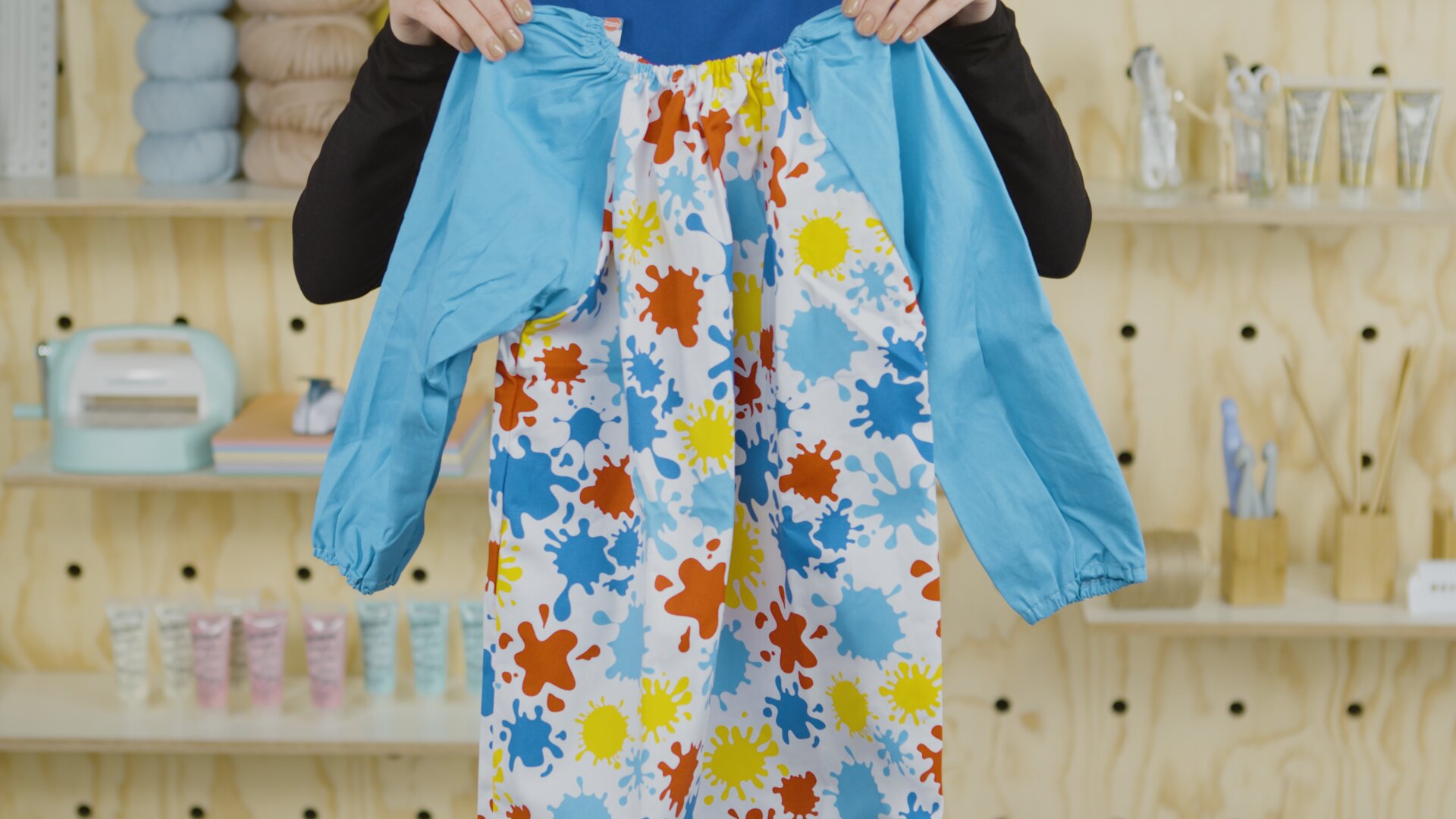
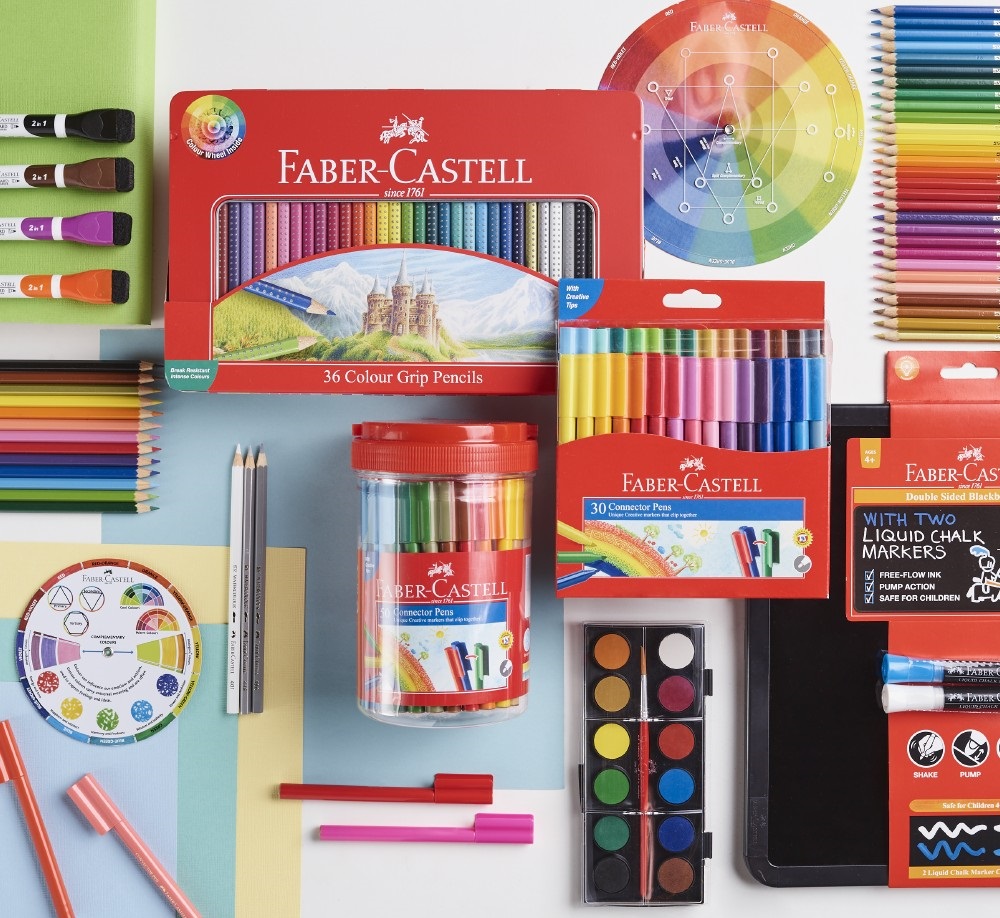
Kids' pencils
- A basic set of coloured pencils should be a part of every kid's art supplies. A starter set of twelve colours is all they need to start colouring, drawing, and writing. Many pencils come with special grips to make them easier for children to hold - look for jumbo or tri-grip Crayola pencils if your child is just starting to draw with pencils.
- Kids who are committed to their art can upgrade to larger sets with higher-quality pigments. Special colours like gold, silver and white can all inspire kids to draw new things and try new techniques.
- Grey lead pencils are excellent for sketching. They are also perfect for kids who are practising drawing shapes, letters and numbers because they are easily erasable. Grey leads come in different sizes - HB is a good standard grey lead size. A high number before the letter H indicates a pencil that is hard and will produce a thin, light line while pencils with a high number before the letter B indicates a soft, dark pencil that makes smudgy lines.
Kids' markers
- Washable markers are a must for little kids. They allow them to draw freely, while you don't have to stress at any permanent markings on your walls, floor or clothes!
- Larger sets of bright markers present endless drawing, writing and colouring possibilities. You can find markers that have special characteristics too, like a delicious smell, a stamp-shaped tip or an extra-large felt tip!
- Connector pens are a great choice for school-age kids, as the wide range of colours and fun snap-together caps make them perfect for drawing and having fun with, plus they stay together in a pencil case.
Kids' crayons
- Large or oversize crayons are great for even the littlest toddlers, because they're easy to grip, and they produce big bright marks on paper.
- Standard-size crayons are awesome for colouring because they fill in white space more quickly than pencils!
- Twistable crayons are great because they are very portable. Their plastic bodies protect them from being broken when carried around in pencil cases.
- Soft pastels are perfect for primary school age kids, as they are similar to chalk but contain lots of beautiful pigment that they can create gorgeous art with.
- Older kids can start to experiment with the vivid and super blendable qualities of oil pastels. These silky pastels have a buttery texture that helps them act like oil paints but without the potential mess and aroma.
Kids' paper
- Try large jotters and scrapbooks for lightweight, inexpensive paper. Rolls of butcher paper are perfect for quick fingerpainting projects.
- Visual journals have higher quality paper for serious young artists. Special paper with a high GSM rating can even withstand paints!
- Loose white or coloured paper is best for creating artwork to hang on the fridge or wall. Simple printer paper is fine for drawings, but make sure you are looking for thicker paper if your child will be using paint for their projects.
- Encourage your kids to try drawing on heavier cardstock to create personalised cards to send to loved ones. Birthdays and Christmas are perfect occasions for a handmade card, and if your child enjoys this it can lead to an interest in scrapbooking in the future.
Get your kids into papercraft with our super fun paper binoculars and paper party hat projects!
Kids' Beading Supplies
Kids love beading because the process is fun and the end product is wearable! Kids' beaded creations make great additions to their dress-up boxes or can even be unique gifts for special friends and family. Making jewellery can be one of the most fun kids' holiday activities that you can do in a group - sit your child down with their friends and a bunch of beading supplies and see what they create!
Choosing beading supplies for your kids is easy when you know what you're looking for.
Kids' beads
- Start with the beads themselves because they will inform the other choices you make.
- Consider bead size. The larger the beads, the easier they are for little hands to handle - and the less likely they are to be swallowed!
- See what colours and materials your kid is drawn to. Beads can be made of wood, glass, plastic or ceramic, and come in a multitude of colours.
Kids' pendants and charms
- Pendants and charms make great accents on necklaces and bracelets. Charms are a necessity if your child wants to make their own unique charm bracelet!
- They come in all shapes and sizes, including animals, stars, coins, and more. You'll be sure to find one that your child loves!
- Pendants and charms can also be used on other kinds of crafts, such as homemade dreamcatchers, phone danglers and keyrings.
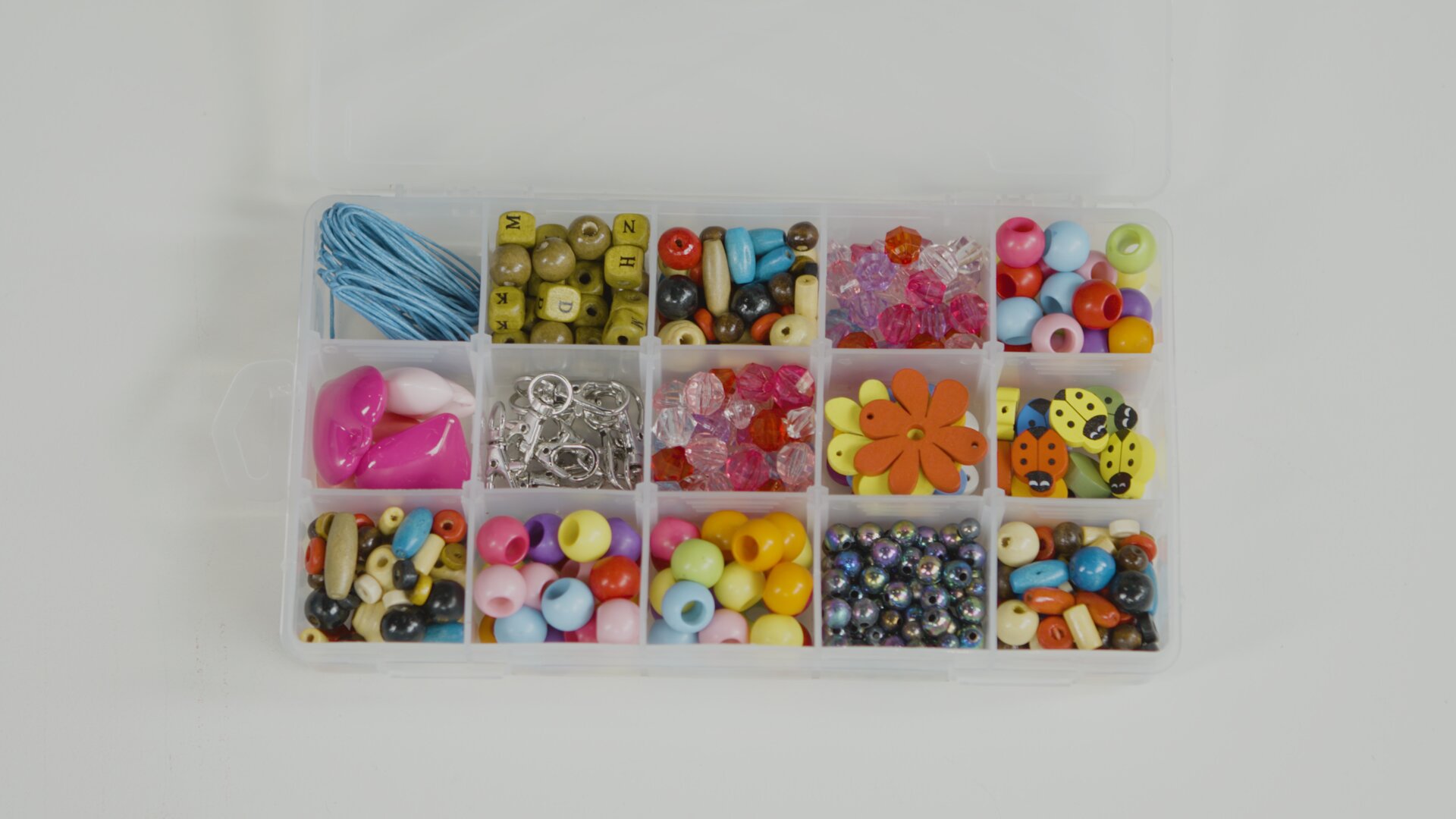
Kids' threads
The easiest threads for kids to use are stretch thread or nylon non-stretch thread. These simply require knots to be tied off and are soft enough that kids can work with them safely. If your child has trouble stringing their beads on, offer to help by letting them choose the order of the beads but do the stringing yourself.
Kids' findings
Older children may wish to use clasps and other fastenings, as these will allow them to create professional-looking jewellery that can be put on and taken off easily. These require tools to attach and secure, such as pliers, clippers and crimping tools. Find out more about jewellery tools and findings here.
Kids' beading storage
- Bead organisers come in a range of sizes, depending on bead type and quantity. You can find small, stackable boxes that form a tube perfect for carrying around or large snap-shut carry boxes with dozens of storage compartments inside!
- For large amounts of a single bead type, consider using any of our stylish storage jars, which will not only keep the bead secure but show them off as well.
- Sorting by size, colour, and material will make it easy to access the right beads for the right project. You may like to organise your child's beads for them to help encourage them to keep their beading supplies tidy.
Your kids will love making our beaded necklace and beaded bracelet projects!
Kids' Mosaic Supplies
Kids love mosaics because of the magic to be found in assembling smaller parts into a larger image or design. They're freeform puzzles with endless variations and possibilities!
Kids' paper mosaic supplies
- The easiest way to introduce kids to mosaics is with paper or card. Cut the paper up into small shapes to produce pieces that kids can arrange and rearrange as much as they like.
- When you cut them yourself, you're able to choose a size that's appropriate for your child's age and skills. Folding the paper several times first will make cutting out multiple shapes much faster!
- It's very easy to make more of any colour or shape they run out of as they play.
- Once they're done, they can glue the pieces down on a larger sheet, and keep the picture. Use Mod Podge or PVA glue over the top to create a shiny coat that will enhance the colours of the mosaic and also keep every piece down flat.
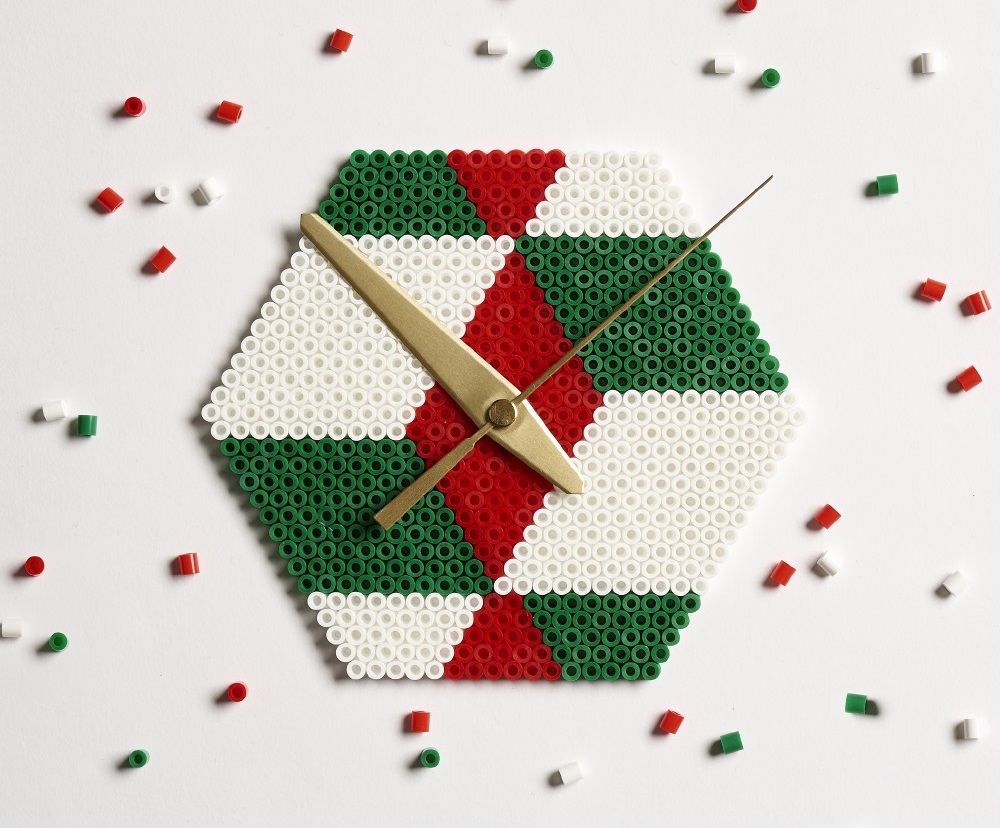
Kids' hama beads
- Hama beads are a different take on mosaics, but the principle is exactly the same. Kids arrange the tiny beads on a board, then an adult irons them so they stick to each other, creating a single object.
- Hama beads can be used to make so many fun projects, from keyrings and earrings to wall art, coasters, and hair accessories.
- Hama beads can come in individual colours or a mega-bucket of loose beads.
- They can even be arranged to look like pixelated versions of their favourite TV, book, or video game characters!
Need some hama bead ideas? Try our hama bead Christmas tree and Easter egg projects!
Kids' Sculpting & Clay Supplies
There is a wide range of sculpting materials available for kids to get creative with, each with different properties. Play-Doh is always a safe choice, but we've got so many more kinds of modelling clay that your child will love!
Kids' plasticine
- Plasticine is reusable and the colours blend easily. It doesn't dry out, as it is an oil-based clay, which also makes it super soft and pleasant to handle.
- It works well for creating projects that can be manipulated and changed, like stop-motion animation.
- It's fun to use carving and cutting tools with plasticine, such as rolling pins and cookie cutters.
Kids' polymer clay
- Sculpey is a brand of polymer clay that comes in a huge range of colours.
- It is incredibly versatile and can be made into anything from ornate sculptures to simple geometric beads.
- To harden polymer clay it must be baked in an oven - adults should do this for young children, or supervise older children if they wish to do it themselves.
- Polymer clay can be glazed for a polished finish. Great first projects for kids include a bowl for your keys, a dice, a ring holder or a coaster.
- You can incorporate other elements into polymer creations such as beads, metallic leaf or jewellery findings. Read our beginner's guide to polymer clay for more information!
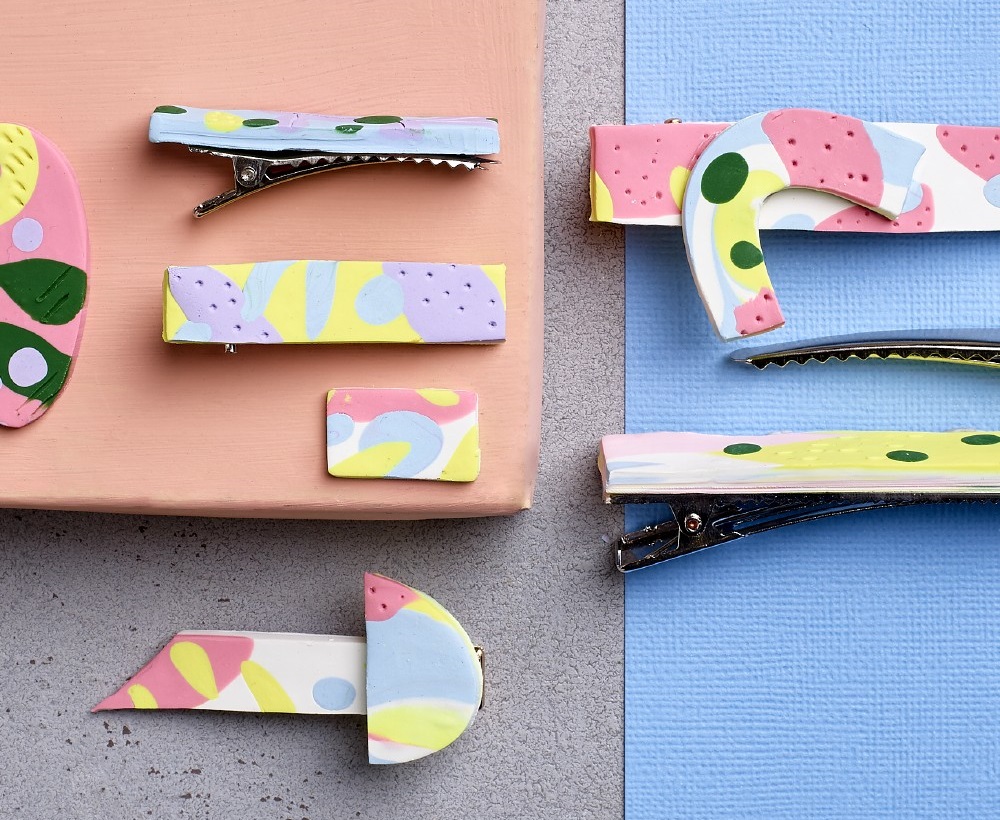
Kids' air dry clay
- Air dry clay is great for making sculptures, and small vessels like bowls and trinket dishes.
- As its name suggests, it doesn't need to be baked as it simply air dries over time. Leave the clay somewhere out of sunlight and excess heat or cold to prevent it from cracking as it dries.
- It comes in solid neutral colours so it's fantastic for kids who want to paint their finished pieces. Use acrylic paint once the clay has fully dried.
Kids who love using clay can try making our Sculpey fairy village or our Sculpey fairy rocks projects.
Building A Kids' Art & Craft Station
Having a craft station set up for your kids is one of the best ways to encourage creative play. If there are supplies at hand to engage with, they'll be drawn to them, and probably surprise you with what they make!
Here's what we suggest you include:
Kids' coloured pencils and markers
Easy to reach for when there's a need to write, draw, or colour.
- Remember to get washable markers if you have smaller kids, so it washes out of clothes and off surfaces.
- Include a pencil sharpener so broken pencils can be fixed quickly! You may like to keep pencils in a tray or cup so kids can quickly grab what they need, rather than having to slide pencils in and out of a packet.
Kids' watercolour paint set
These don't have to be expensive artist-quality paints. A simple palette with watercolour bricks is great for kids who are learning to paint, as all they need to add is some water to get the paint flowing.
Kids' poster and acrylic paint
For bold, bright projects, and art on a larger scale, look to non-toxic poster and acrylic paints.
- Poster paint is basic paint best used on large sheets of butcher paper for activities like finger painting and stamping. Poster paint can be reworked by adding water even when dry.
- Acrylic paint is best used for painting with a brush, especially if your child intends to display the artwork afterwards. Acrylic paint is waterproof once dry.
- You can find paint packs with plenty of colours for both poster paint and acrylic paint. Choose one with a good range of colours for your child's art station, or at least make sure to include all the primary colours so they can mix their own.
Kids' paper and card
Having a good supply of paper means that kids will never be lost for somewhere to put their imaginative ideas - and they'll never have to raid the office for printer paper either!
- Coloured paper can be cut into shapes for collages and mosaics. It can also be used to make folded origami models and 3D papercraft projects.
- Different weights of paper and cards will lend themselves to different media and projects. Make sure your child has access to thin paper (for folding, drawing and crafting with) and thick paper (for painting on, cardmaking and scrapbooking with).
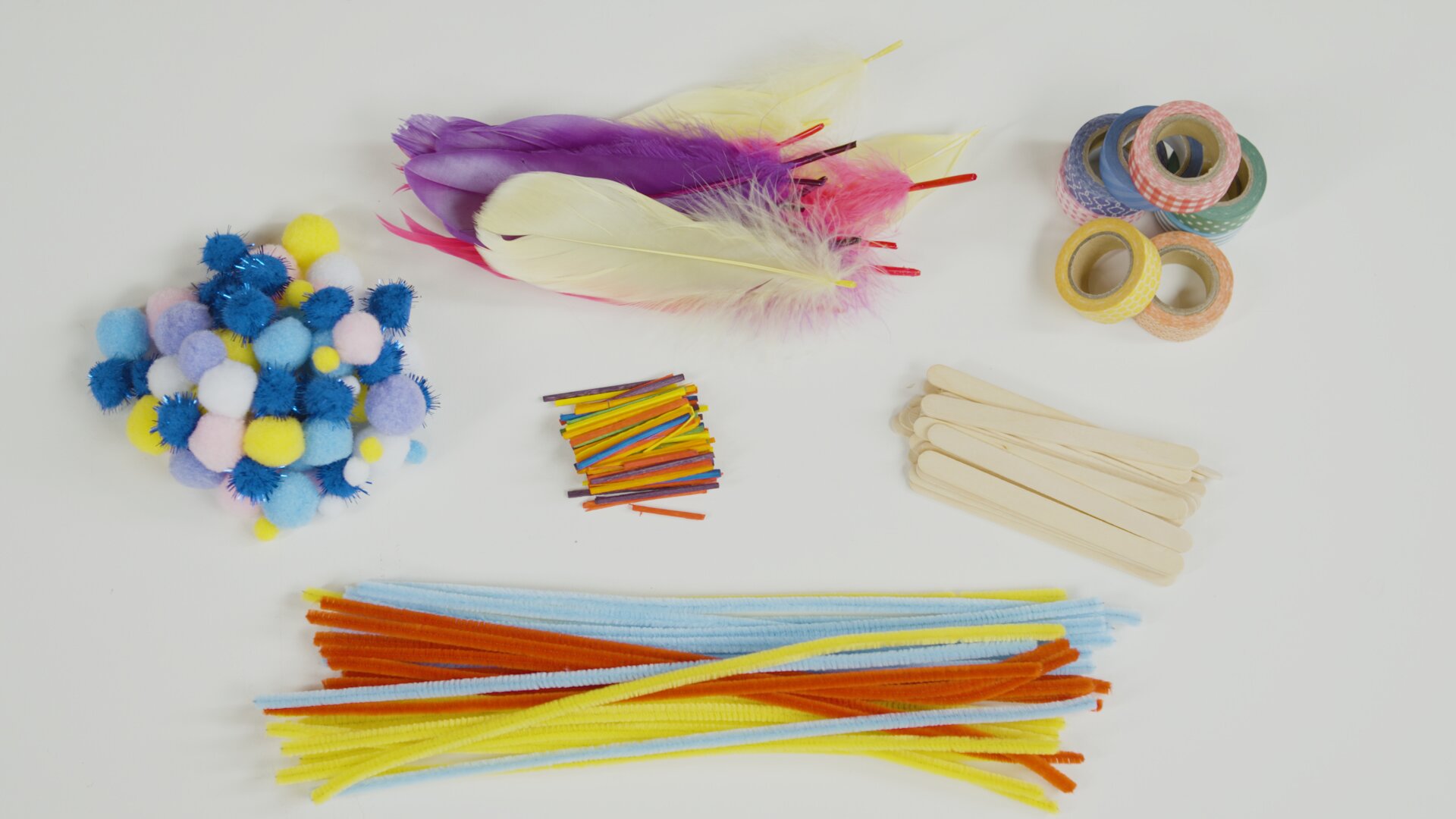
Kids' stickers
Kids love to both collect and use stickers, and each type can be used in different ways.
- Try using alphabet stickers so kids can include words and phrases in their art.
- Simple geometric shapes like stars and dots are very versatile, and can be used decoratively or be connected to create other patterns and images.
- Stickers in character or object shapes can be used to create scenes and tell stories. Kids may also love to decorate their school supplies with stickers of their favourite characters!
Kids' scissors and glue
Sharp craft scissors should only be used by competent older children. Child-safe scissors are the only kind that should be kept available at a craft station.
Most kids' crafts will call for glue at some point. There are a few that are handy to include.
- Kid-safe PVA: This is useful for sticking down dimensional objects like pom poms, or surfaces that are different from each other like paper and fabric. PVA can also be used to make papier mache!
- Glue sticks: The easiest glue for kids to use, and excellent for paper crafts. You can get coloured glute sticks to help your child see how much glue they have laid down and what spaces they still need to fill.
Kids' pom poms and chenille sticks
Pom poms are a fantastic way for kids to add texture and dimension to their arts and crafts. Making pom poms is also a child-friendly activity and gives your child the option to make larger pom poms for their projects.
Try getting chenille sticks in a bulk pack, with all kinds of colours and sizes. Kids love sparkly ones too - they're just like tinsel! Chenille sticks (aka pipe cleaners) can be twisted into all sorts of shapes and can be implemented into almost any craft project, They're also very handy for kids' holiday activities - twirl them into Christmas tree ornaments, create a house for a back to school diorama or use them as an accessory for homemade jewellery!
Extra kids' craft supplies
There are so many kids' craft supplies that we haven't covered, but this guide will go on forever if we try to! Here is a quick list of other kids' craft supplies you can find at Spotlight:
- Paddle pop sticks: Both plain the coloured varieties are great for building models with. Make houses, fences, skyscrapers and bridges!
- Match sticks: These thin sticks also come in natural and coloured varieties, and pair well with paddle pop sticks for model making.
- Washi tape: Decorate scrapbook pages, cards and posters with this colourful, soft-textured paper tape.
- Masking tape: This paper tape can be coloured in or used to block off areas to be kept clean when painting.
- Feathers: Our feathers come in colourful and natural-looking varieties. Use them to add some texture and elegance to any craft project!
- Clothespins: Create a line of photos on a string, a mini-clothesline or even colourful characters with clothespins. Wooden clothespins can be coloured in using paint or markers if needed.
- Stamps: Quickly create colourful shapes on any solid surface with our range of stamps.
Browse our range of kids' craft supplies to discover even more amazing products that are perfect for free time after school, and the holidays, including our games and puzzles range, our kids' colouring books, our kids' activity kits and our range of colourful, gooey slime!
For many more easy kids' craft ideas, browse our kids' craft projects online.
Discover Amazing Kids' Art And Craft Supplies At Spotlight
Make sure to check out our art and craft supplies online, where you can quickly pay and have your order home delivered. You can also visit your nearest Spotlight store to do your shopping in person!
For more information on our art and craft supplies, read our buying guides on paints and mediums, paper and card and pens, pencils and markers. And for more art and craft inspiration and ideas, read our blogs on painting on fabric, drawing with markers and the benefits of finger painting for all ages!




